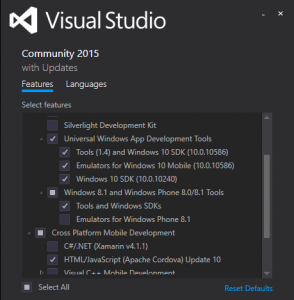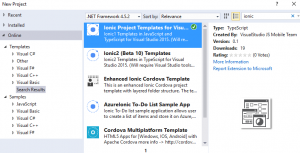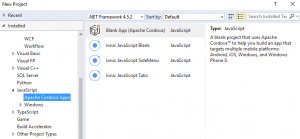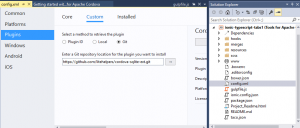I developed a mobile app recently. VS is an excellent tool in managing the project and debugging. I would like to start from setting up the project in VS, followed by my experience in my mobile development journey.
The app is a bookkeeping of your investment. Your investment can be in the brokerage account, retirement account or HSA. Besides bookkeeping, it also calculates the rate of investment.
First of all, I use Visual Studio 2015 Community with Apache Cordova Tool. I chose to install Windows phone 10 SDK. You can install the Android emulator and the Android SDK. It's up to your target platform.

Note that even though you just want to target Windows 10 and Windows Phone 10, you still need to install Windows Phone 8.1 Tools and SDKs. Otherwise you won't be able to debug it on your Windows 10 Phone. It complains that bin/arm/dbghelp.dll is not found and it comes with Windows Phone 8.1 Tools.
Framework can improve productivity and accelerate development. It provides the backbone of the application and glue all major parts together. I just need to follow the pattern and fill in the parts. I chose Ionic framework.
What UI is suitable for this app? Ionic provides some templates: simple, tabs and side menu. I think side menu provides the largest real estate on the screen, while flexible in navigation.
It's easy to create an Ionic project in VS. In the "New Project" dialog, search Ionic in the Online tab, then download the one you like.

After the template is downloaded, you need to re-open "New Project" dialog, and Ionic project templates are in the Installed tab.

Since it's bookkeeping, it needs to persist the data. Sqlite is suitable in the mobile application. I found a plugin at GitHub (https://github.com/litehelpers/cordova-sqlite-ext.git).
In VS, open config.xml (View Designer), then add a custom plugin. Use the git repository and install it. 
So far, I've set up the project. The journey has started.



